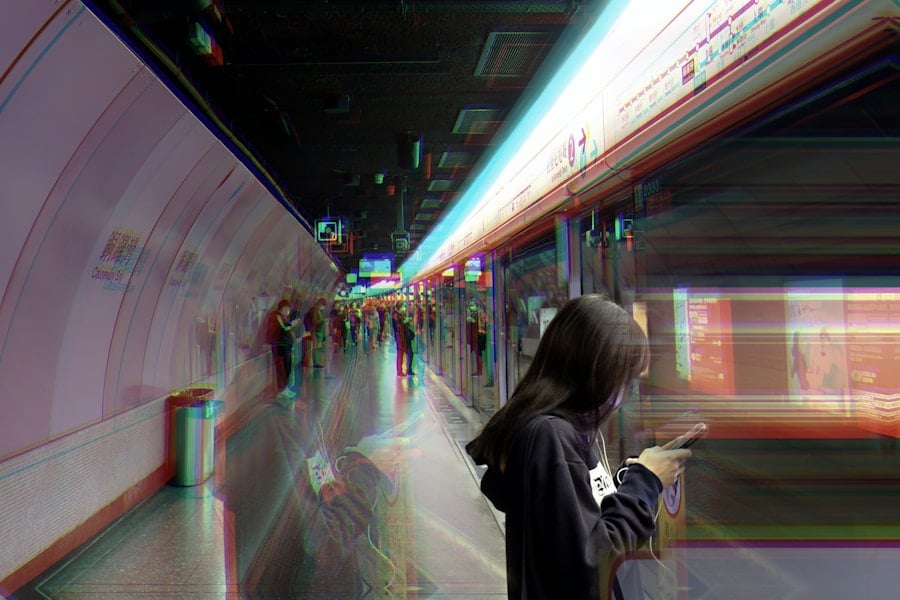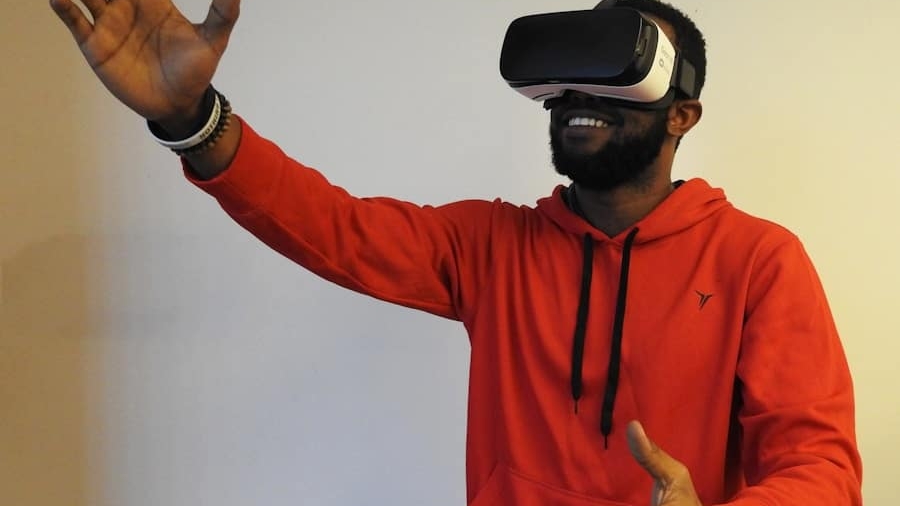Mixed Reality (MR) represents a transformative intersection of the physical and digital worlds, where real and virtual elements coexist and interact in real-time. This technology encompasses a spectrum of experiences, from augmented reality (AR), which overlays digital information onto the real world, to virtual reality (VR), which immerses users in entirely virtual environments. The advent of MR has been fueled by advancements in hardware, such as headsets and mobile devices, as well as software that enables sophisticated interactions.
As a result, MR is not merely a technological novelty; it is reshaping how we perceive and engage with our surroundings, offering new avenues for communication, education, and cultural exchange. The implications of MR extend far beyond entertainment and gaming. In an increasingly globalized world, the ability to connect with diverse cultures is paramount.
MR has the potential to bridge geographical divides, allowing individuals to experience cultural practices, traditions, and histories in immersive ways that were previously unimaginable. By facilitating remote cultural exchanges, MR can foster understanding and appreciation among people from different backgrounds, ultimately contributing to a more interconnected global community. As we delve deeper into the challenges and opportunities presented by MR in cultural exchanges, it becomes evident that this technology is poised to play a pivotal role in shaping our collective future.
Key Takeaways
- Mixed reality combines elements of virtual and augmented reality to create immersive experiences
- Remote cultural exchanges face challenges such as language barriers and limited physical interaction
- Mixed reality has the potential to bridge the gap in remote cultural exchanges by creating immersive and interactive experiences
- Successful examples of mixed reality cultural exchanges include virtual museum tours and language exchange programs
- Barriers in implementing mixed reality for cultural exchanges can be overcome through investment in technology and cross-cultural collaboration
Current Challenges in Remote Cultural Exchanges
Despite the promise of technology to enhance cultural exchanges, significant challenges persist in facilitating meaningful interactions across distances. One of the primary obstacles is the lack of authentic engagement. Traditional methods of remote cultural exchange, such as video conferencing or social media interactions, often fail to capture the nuances of cultural practices and expressions.
Participants may find it difficult to fully immerse themselves in another culture when the experience is mediated through screens, leading to superficial understandings rather than deep connections. Additionally, language barriers pose a significant challenge in remote cultural exchanges. While translation tools have improved dramatically, they often fall short in conveying the subtleties and idiomatic expressions that are integral to cultural identity.
Misinterpretations can lead to misunderstandings and reinforce stereotypes rather than dismantling them. Furthermore, access to technology remains uneven across different regions, creating disparities in who can participate in these exchanges. Individuals from underrepresented communities may lack the necessary resources or infrastructure to engage fully, perpetuating existing inequalities in cultural representation and understanding.
The Potential of Mixed Reality in Enabling Remote Cultural Exchanges

Mixed Reality offers innovative solutions to the challenges faced in remote cultural exchanges by providing immersive experiences that can transcend traditional barriers. By integrating real-world elements with digital enhancements, MR can create environments where users feel as though they are physically present in another culture. For instance, through MR applications, users can explore historical sites or participate in traditional ceremonies from their own homes, experiencing the sights and sounds of these events as if they were there.
This level of immersion fosters a deeper emotional connection to the culture being represented. Moreover, MR can facilitate interactive learning experiences that engage users on multiple sensory levels. For example, users might not only observe a traditional dance but also learn about its significance through interactive storytelling elements embedded within the experience.
This approach allows for a richer understanding of cultural practices and encourages active participation rather than passive observation. By leveraging MR technology, cultural institutions can create dynamic educational programs that appeal to diverse audiences, making cultural exchange more accessible and engaging.
Examples of Successful Mixed Reality Cultural Exchanges
Several pioneering projects have demonstrated the effectiveness of Mixed Reality in facilitating cultural exchanges. One notable example is the “Virtual Reality Museum of Canada,” which allows users to explore Canadian history and culture through immersive experiences. Visitors can walk through virtual galleries featuring Indigenous art, historical artifacts, and interactive exhibits that bring stories to life.
This initiative not only showcases Canada’s diverse heritage but also invites users from around the world to engage with it in a meaningful way. Another compelling case is the “Cultural Heritage VR” project developed by the University of Southern California’s Institute for Creative Technologies. This initiative focuses on preserving and sharing the cultural heritage of various communities through immersive storytelling.
By using MR technology, participants can experience traditional rituals and practices from different cultures, gaining insights into their significance and context. Such projects highlight how MR can serve as a powerful tool for cultural preservation while simultaneously fostering cross-cultural understanding.
Overcoming Barriers in Implementing Mixed Reality for Cultural Exchanges
While the potential of Mixed Reality is vast, several barriers must be addressed to ensure its successful implementation in cultural exchanges. One significant challenge is the need for high-quality content that accurately represents diverse cultures. Collaborating with cultural experts and community members is essential to create authentic experiences that resonate with users.
This collaborative approach not only enhances the quality of the content but also empowers communities by giving them a voice in how their culture is represented.
Efforts must be made to develop low-cost MR solutions that can be accessed on various devices, including smartphones and tablets.
Partnerships with educational institutions and non-profit organizations can help bridge the digital divide by providing resources and training for underrepresented communities. By ensuring that MR technology is accessible to all, we can create inclusive platforms for cultural exchange that reflect the richness of global diversity.
The Role of Mixed Reality in Preserving Cultural Heritage

Mixed Reality plays a vital role in preserving cultural heritage by providing innovative ways to document and share traditions that may be at risk of fading away. For instance, MR can be used to create digital archives of traditional crafts, performances, and rituals, allowing future generations to access and learn from these practices. By capturing the essence of cultural expressions in immersive formats, MR ensures that these legacies are not lost to time.
Moreover, MR can facilitate virtual reconstructions of historical sites that have been damaged or destroyed. Projects like “The Lost Cities” initiative use MR technology to recreate ancient civilizations, allowing users to explore these environments as they once existed. Such reconstructions not only serve as educational tools but also raise awareness about the importance of preserving cultural heritage in the face of globalization and urbanization.
By engaging users with these virtual experiences, MR fosters a sense of responsibility towards safeguarding cultural legacies for future generations.
Ethical Considerations in Mixed Reality Cultural Exchanges
As with any emerging technology, ethical considerations must be at the forefront when implementing Mixed Reality for cultural exchanges. One critical issue is the potential for cultural appropriation, where elements of a culture are used without proper understanding or respect for their significance. It is essential for creators of MR content to engage with cultural representatives and ensure that their work honors the traditions being represented rather than commodifying them.
Furthermore, privacy concerns arise when using MR technology to document cultural practices or personal stories. Participants must be informed about how their data will be used and have control over their representation within these digital spaces. Establishing clear ethical guidelines for content creation and user engagement will help build trust between creators and communities while promoting responsible practices in MR cultural exchanges.
The Future of Mixed Reality in Facilitating Global Cultural Understanding
Looking ahead, Mixed Reality holds immense promise for enhancing global cultural understanding through innovative exchanges that transcend geographical boundaries. As technology continues to evolve, we can expect more sophisticated MR experiences that offer deeper levels of immersion and interactivity. These advancements will enable users to engage with cultures in ways that are not only informative but also transformative.
By fostering empathy and understanding through immersive experiences, Mixed Reality has the potential to unite individuals from different backgrounds around shared values and goals. As we embrace this technology’s capabilities, we move closer to a future where cultural exchange becomes a powerful tool for building bridges across divides and nurturing a more harmonious global society.
In addition to exploring the potential of mixed reality in facilitating remote cultural exchanges, it is also important to consider the tools and devices that can enhance the overall experience. For students looking to engage in virtual cultural exchanges, choosing the right tablet can make a significant difference in their ability to immerse themselves in different cultures. This article on how to choose a tablet for students provides valuable insights into selecting the best device for educational purposes. By investing in the right technology, students can fully embrace the opportunities for cross-cultural learning offered by mixed reality platforms.
FAQs
What is mixed reality?
Mixed reality (MR) is a technology that combines elements of both virtual reality (VR) and augmented reality (AR) to create a new environment where physical and digital objects coexist and interact in real time.
How does mixed reality enable remote cultural exchanges?
Mixed reality allows people from different parts of the world to interact and engage in cultural exchanges without physically being present in the same location. It can simulate real-life experiences and environments, making it possible for individuals to participate in cultural events, visit historical sites, and engage in cultural activities remotely.
What are the potential benefits of using mixed reality for cultural exchanges?
Using mixed reality for cultural exchanges can help preserve and promote cultural heritage, facilitate cross-cultural understanding, and provide access to cultural experiences for individuals who may not have the means to travel. It also has the potential to create new forms of artistic expression and collaboration across geographical boundaries.
What are some examples of mixed reality applications for cultural exchanges?
Some examples of mixed reality applications for cultural exchanges include virtual museum tours, interactive storytelling experiences, language and music education programs, and collaborative art projects that bring together artists from different cultural backgrounds.
What are the challenges of implementing mixed reality for remote cultural exchanges?
Challenges of implementing mixed reality for remote cultural exchanges include technological barriers, such as access to high-quality MR devices and reliable internet connections, as well as concerns about privacy, authenticity, and the potential for cultural appropriation in virtual environments. Additionally, there may be limitations in terms of the accessibility and inclusivity of MR experiences for diverse audiences.

